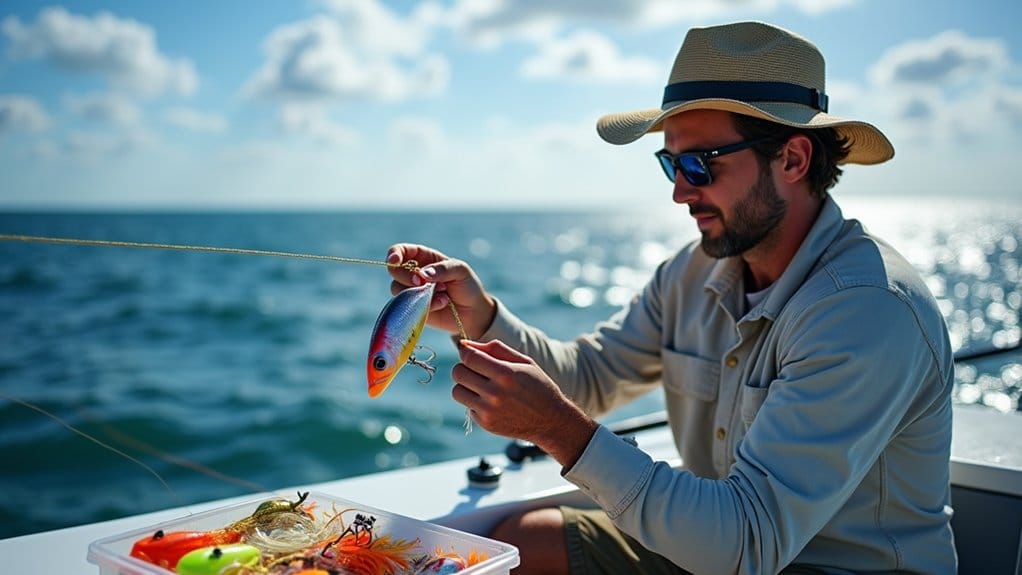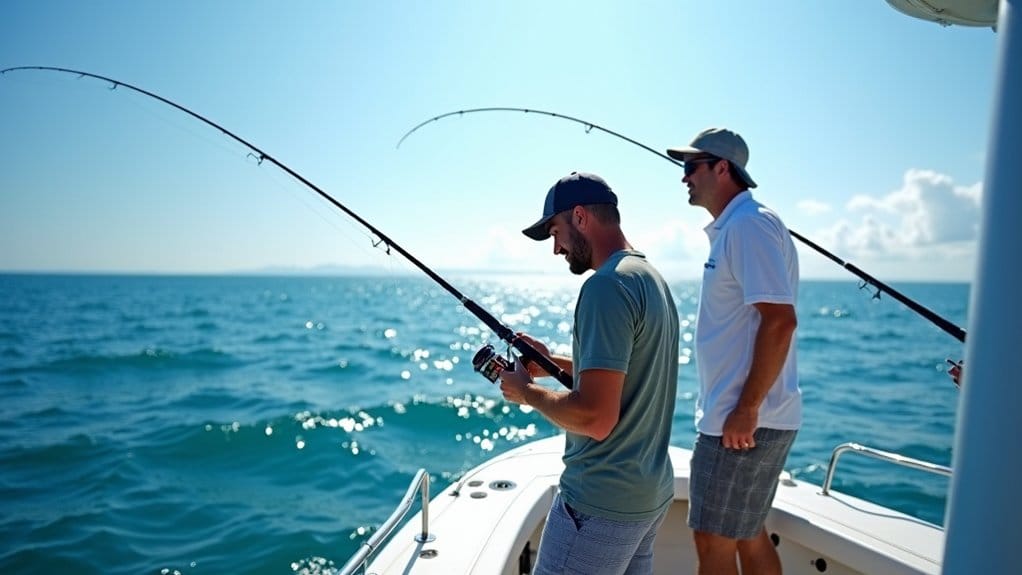Essential Offshore Fishing Techniques for New Anglers
When you venture into offshore fishing, understanding how ocean currents affect fish behavior is key. You'll want to present your bait effectively, using techniques that attract fish to your line. Knowing how to set your hook and maintain pressure while reeling in can make all the difference in your success. Curious about the specific strategies that can elevate your fishing game? Let's explore these essential techniques together.
Understanding Ocean Currents and Fish Behavior

Understanding ocean currents is vital for any angler hoping to improve their catch rate. Ocean currents greatly influence fish behavior by distributing nutrients and prey, attracting larger species like mahi-mahi and tuna.
You'll often find fish near current edges, where warmer and colder waters meet, creating ideal feeding zones. Pay attention to tidal movements, as fish are more active during incoming or outgoing tides.
Current lines and floating debris are prime fishing spots, especially for new anglers. Additionally, monitoring weather patterns and seasonal changes is important, as shifting currents can alter fish populations and their feeding habits throughout the year.
Bait Presentation and Rigging Techniques

Bait presentation is the cornerstone of successful offshore fishing, as it directly influences your ability to attract game fish.
Using live bait can greatly enhance your catch rates, thanks to its natural movement and scent. For trolling, rigging ballyhoo with circle hooks is standard practice, making it easier to release billfish.
When targeting specific species, like mahi-mahi, cut squid can create a feeding frenzy, while whole squid may lure larger predators.
For deep-dropping, use heavy-duty rigs with suitable weights to reach depths of 300 feet, ensuring your bait is presented naturally to entice golden or blueline tilefish.
Mastering these rigging techniques will sharpen your fishing skills and elevate your offshore adventure.
Hook Setting and Reeling Techniques

Mastering hook setting and reeling techniques is essential for every new angler venturing into offshore fishing. When you feel a bite, use a swift, firm upward motion for hook setting, especially with circle hooks that require a different approach.
Maintain steady reeling to keep pressure on the fish, avoiding jerks that might dislodge the hook. Keep your rod tip elevated at about a 45-degree angle for better control and line tension. Adjust the drag on your reel to match the fish's strength, allowing for smooth, steady reeling.
If the fish makes a sudden run, release tension and let it take line before applying pressure again. Following these tips from experienced anglers will help you successfully catch fish!






